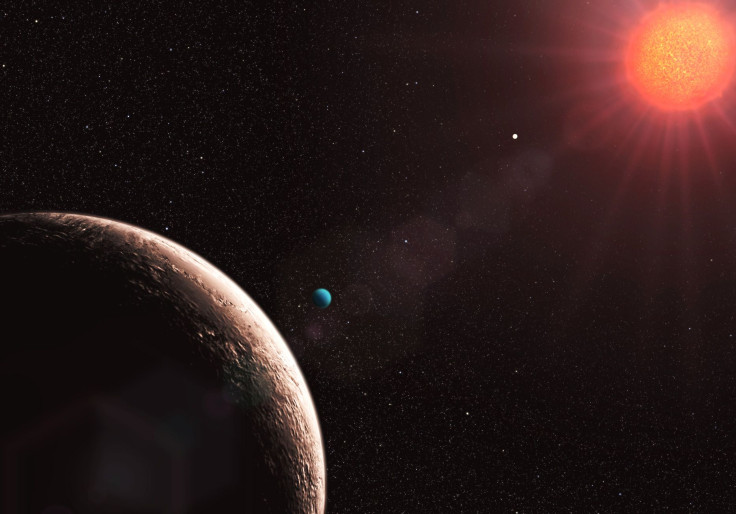Two Faraway Planets Thought To Be Habitable Debunked By Scientists

Two exoplanets discovered in 2011 and believed to have been in the habitable zone of Gliese 581 (GJ 581) do not exist. A new study disproves the existence of Gliese 581d and Gliese 581g, but the methods used in the research may be applied to find new exoplanets.
Researchers at Penn State University revisited the previous data that had led to the discovery of the Gliese 581 planet system. Prior to the study, there were believed to be six planets orbiting the star. In addition to GJ 581d and GJ 581g; GJ 581e was discovered in 2009 and is closest to the star, GJ 581b was discovered in 2005 and GJ 581c, a “super-Earth” was discovered in 2007. GJ 581d was an exciting discovery as it was an "Earth-like" planet that fell within the habitable, or "goldilocks," zone of the star. GJ 581g and GJ 581f were discovered in 2010.
As noted by the researchers, the Habitable-Zone Planet Finder (HPF) is a spectrograph and can discover planets via the radial velocity method. If a planet is orbiting a star, the gravitational pull of the planet will cause the star to “wobble,” which causes a shift in the observed wavelength.
In the hunt for exoplanets, the telescope is extremely sensitive and results have to be adjusted for noise from within the instrument as well as from external sources. One such cause for external noise is stellar activity, notes the HPF blog post discussing the study. Increased or decreased stellar activity, such as sun spots, can produce a false positive or hide a potential exoplanet.
One way to verify findings is to observe blue wavelengths, caused by the emission of calcium, but faint dwarf stars such as Gliese 581 are cool and do not produce much blue light. The researchers solved that problem by observing the red wavelength, produced by hydrogen alpha or sodium.
By examining hydrogen alpha and sodium emissions, PSU researchers were able to determine the rotation period of Gliese 581 and the effect of stellar activity on the radial velocity of the star. Gliese 581 has a rotation period of 180 days and is an older star while low hydrogen alpha emission was linked to high radial velocity.
With this knowledge, researchers were able to create a formula which balanced out the effect of stellar activity on the wobble of the star and compared it with the data which led to the discovery of the six planets.
As noted by the blog post, the discovery of GJ 581f was retracted and there was plenty of skepticism over GJ 581g while GJ 581b’s existence is widely accepted but GJ581d’s existence was only recently questioned.
Based on the new technique, Gliese 581b, a hot-Neptune, was confirmed as a planet while Gliese 581d and Gliese 581g did not exist. According to the abstract, “GJ 581d does not exist, but is an artifact of stellar activity which, when incompletely corrected, causes the false detection of planet g.”
Speaking to the Washington Post, lead researcher Paul Robertson defended the work which led to the discovery of GJ581d and GJ 581g but noted that it is part of the scientific method. "You have this happen all the time, where you have a result that looks to all the world correct, but if you introduce a new perspective or a new tool, those results can change," said Robertson.
The research was published in the journal Science. A video discussing the Gilese 581 planet system, courtesy of PSU, can be viewed below.
© Copyright IBTimes 2024. All rights reserved.






















